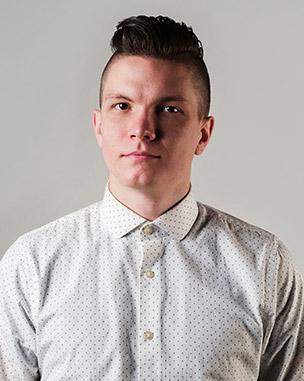Published on Sept. 1, 2015


When 22-year-old Mizzou student Drew Nikonowicz awoke to an email from the Aperture Foundation early one morning, he wasn’t expecting good news.
As a young photographer, Nikonowicz had received his fair share of rejection letters from organizations that thanked him for his participation in a particular photography contest but informed him that his submission had, regretfully, not been chosen as the winner. The prestigious awards were most always given to seasoned photographers—those with years of experience in the profession. The Aperture Portfolio Prize, a highly selective contest held each year with thousands of applicants worldwide, was the same.
In the past nine years, winners of the Aperture Portfolio Prize have ranged in age from 26 to 55 years old, with an average age of 33.4.
“You grow accustomed to getting rejection letters. It’s a very real thing in every area of life, whatever your profession is,” Nikonowicz says. “You’re going to apply for 10 jobs and [maybe] get one.”
He knew rejection was the price he would pay for professional exposure. So when he saw an email with the subject line “Call for Entry: Aperture Portfolio Prize” early that morning, he was anticipating the normal “we regret to inform you” language common of rejection letters.
But the email didn’t have any of the typical “rejection letter” language. No ‘howevers,’ no ‘unfortunatelys,’ nothing. In fact, the letter seemed upbeat and congratulatory.
“The early-morning me was a little bit unconvinced,” Nikonowicz says. He calmly continued reading the email, only stopping after his eyes had glided over the list of winners—the three runners-up and the overall winner. Nikonowicz had been selected as the overall winner of the Aperture Portfolio Prize, earning him a cash prize and a solo exhibition in New York. Since the Aperture Foundation has begun archiving winners in 2006, Nikonowicz is by far the youngest to have won the prize.
“I read it once, and I was like, ‘Wait, did I see what I think I saw?’” Nikonowicz recalls. “So I started over. I thought, ‘Hold on, let’s read this again.’ And it took me about five times to actually slow myself down enough to read it sentence-by-sentence and word-for-word to really understand what had happened.
“It was a crazy moment,” he says. “It’s still not completely real. I don’t think it will be real until I’m in New York.”
Joe Johnson, a professor in fine arts at Mizzou, who in 2008 was chosen as a runner-up for the Portfolio prize and is very familiar with the high level of competition the prize gains worldwide, was also surprised to find that Nikonowicz had won.
“It was beyond my imagination that he would be identified as a finalist and, ultimately, the winner,” Johnson says. “To have your first solo show in New York City is quite an accomplishment.”
Nikonowicz’s winning work, This World and Others Like It, is a series of landscape photographs that combine 19th century photography with modern technology. He started making photos for the project years ago—though he didn’t know it at the time—both in the form of analog photographs and digital renderings, and, slowly, they became part of a larger project with a grand message.
“My experience with landscape is almost always mediated by technology,” Nikonowicz says. “Technology plays a huge role in the way that I experience not just landscape but everything.”
This World and Others Like It demonstrates how modern technology has affected they way society views the world around them. It has earned recognition from a variety of groups recently, including the Lenscratch Student Prize and Pacific Dissent Magazine.
Nikonowicz will be in New York when his exhibition debuts this winter and will have the chance to meet hundreds of influential people in fine art photography.